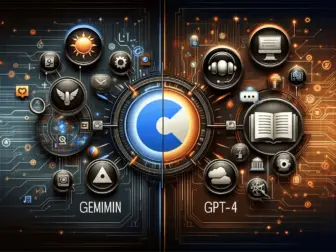Tag - GPT-4
Exploring the Pinnacle of AI: GPT-4's Revolutionary Features and Capabilities
Exploring the Pinnacle of AI: GPT-4’s Revolutionary Features and Capabilities
With the advent of GPT-4, OpenAI has once again set a new benchmark in the field of artificial intelligence. This cutting-edge language model has taken the world by storm, showcasing unparalleled abilities in understanding and generating human-like text. The leap from its predecessor, GPT-3, is not just incremental; it is a transformative advancement that pushes the boundaries of what AI can achieve.
GPT-4, or Generative Pre-trained Transformer 4, is built upon the already robust foundation laid by the previous iterations. However, it boasts a significantly larger dataset and more sophisticated algorithms, which enable it to process and produce language with an extraordinary level of nuance and coherence. This model has been trained on a diverse range of internet text, but with more refined filtering processes to reduce biases and inaccuracies.
One of the most standout features of GPT-4 is its ability to understand context more deeply than ever before. It can maintain the thread of a conversation over much longer stretches of text, allowing for more meaningful and coherent dialogues. This has monumental implications for applications ranging from customer service bots to virtual assistants, which can now provide more accurate and helpful responses to complex queries.
Furthermore, GPT-4’s enhanced understanding of nuances, idioms, and cultural references makes it a powerful tool for content creation. Writers, marketers, and social media managers are finding that GPT-4 can assist in crafting engaging articles, compelling ad copy, and even creative fiction. The AI’s ability to adapt to different styles and tones is a game-changer, providing personalized content at an unprecedented scale.
Another area where GPT-4 shines is in code generation and problem-solving. The model has demonstrated a remarkable aptitude for understanding and generating programming code, making it an invaluable resource for developers. It can suggest code optimizations, detect errors, and even write entire scripts given the right prompts, which can significantly speed up the software development process.
Education is yet another sector that stands to benefit greatly from GPT-4. The model can be leveraged to create detailed educational materials, provide tutoring in various subjects, and offer explanations that are tailored to an individual’s level of understanding. Its potential to democratize education and make personalized learning more accessible is both exciting and profound.
Despite these advancements, GPT-4 is not without its challenges. Ensuring ethical use and preventing the propagation of false information remain critical concerns. OpenAI has implemented stricter content moderation systems and usage guidelines, but the responsibility also falls on the users to exercise judgment and caution when interacting with the AI.
Moreover, as impressive as GPT-4 is, it is not infallible. Users should be aware that it can still make mistakes and should not be relied upon for critical decision-making without human oversight. Its interpretations can sometimes miss the mark, and its creative outputs, while impressive, may lack the nuanced understanding that comes from human experience.
In conclusion, GPT-4 represents a monumental step forward in the journey of artificial intelligence. Its advanced capabilities open up a world of possibilities for businesses, creators, and educators alike. As we continue to explore and harness its potential, it is essential to do so with a commitment to ethical practices and a recognition of the technology’s limitations. The future of AI is bright with GPT-4, and it is up to us to navigate this future responsibly.

